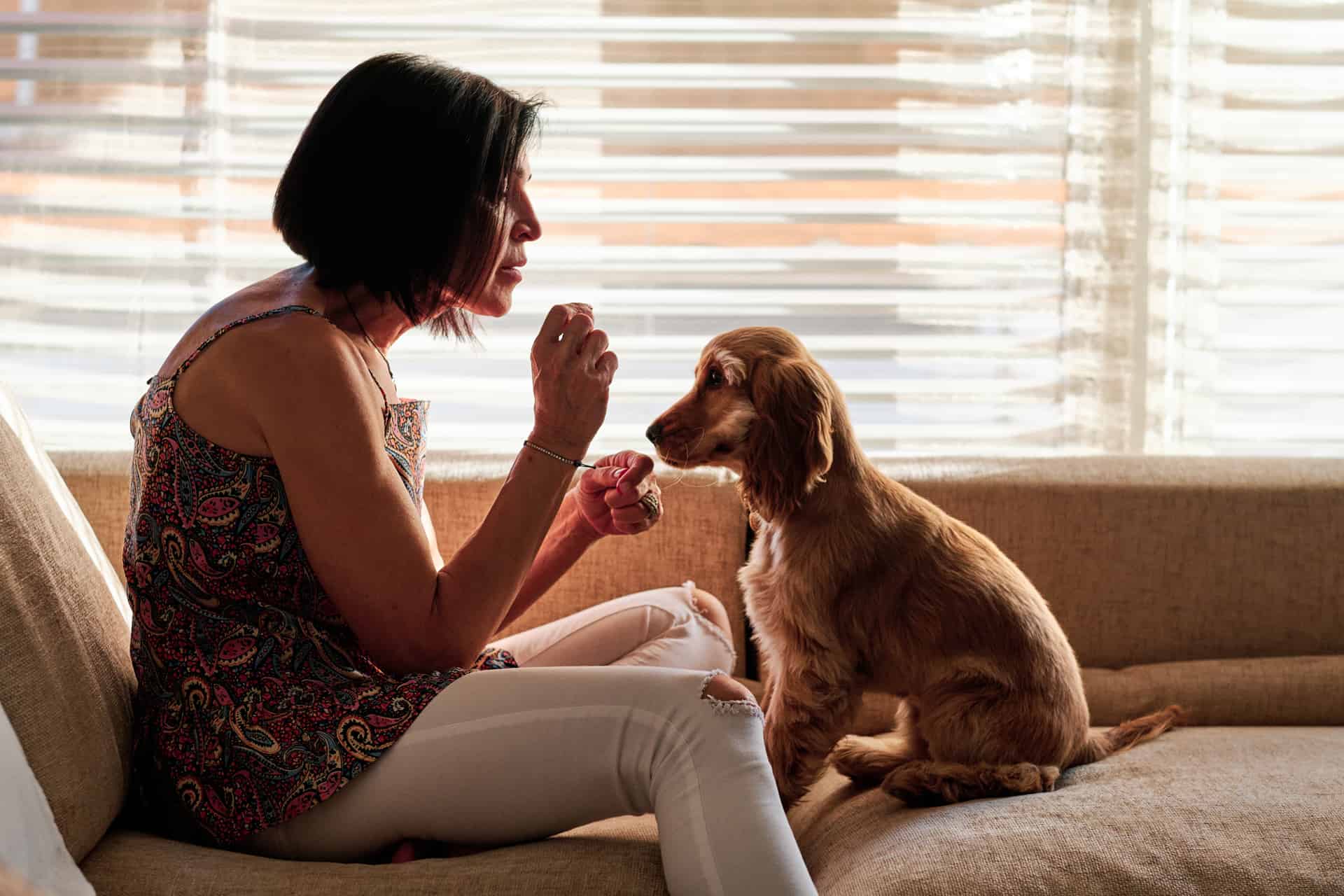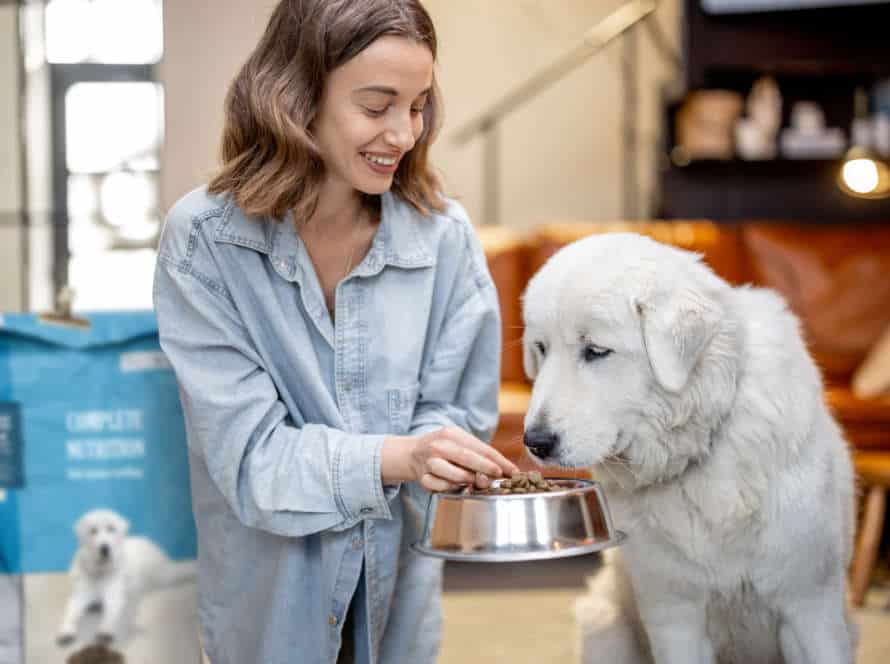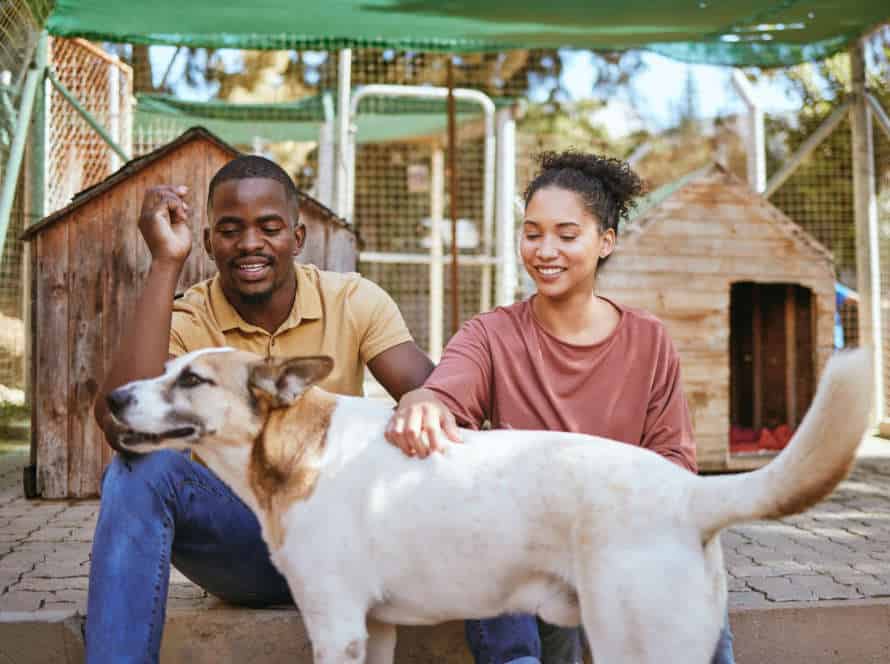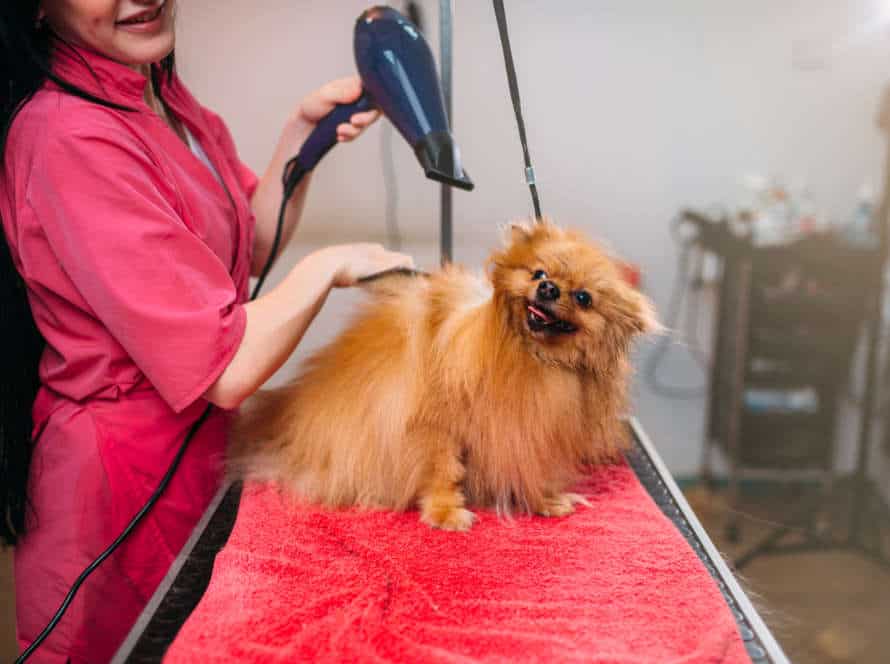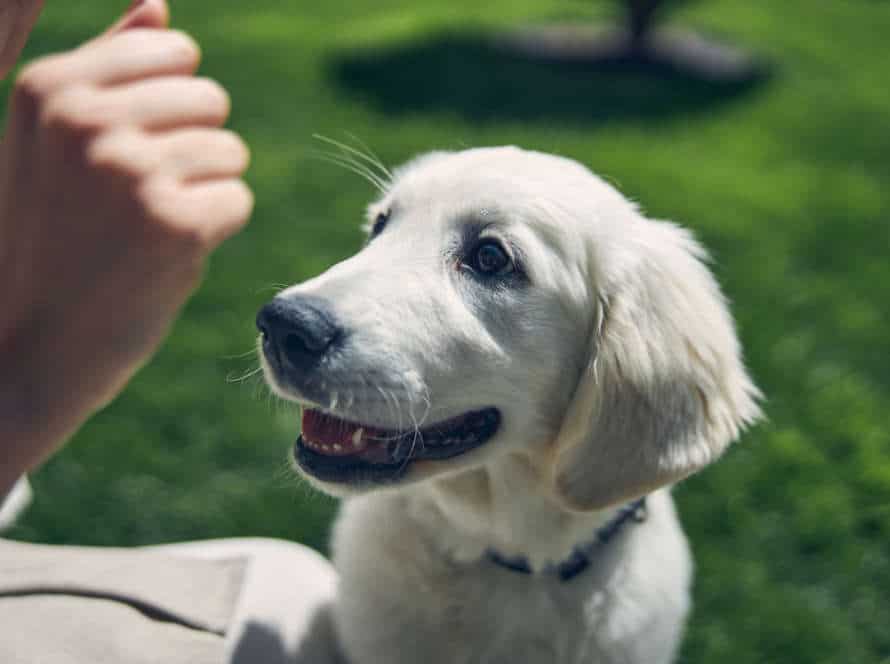5 Life-Changing Benefits of Positive Reinforcement for Dogs
Positive reinforcement is a great, humane way to train doggos! It offers many life-changing benefits for both the pup and its human caretaker. Here are 5 of the most important ones:
- Generates Trust: Positive reinforcement creates a bond based on trust and mutual respect between the pup and its owner.
- Boosts Learning: Pups are more likely to learn and keep positive behaviors when rewarded with treats, praise, and love.
- Fosters Good Behavior: Positive reinforcement motivates pups to repeat good behaviors and reduces the occurrence of negative ones.
- Reduces Fear and Aggression: Since positive reinforcement avoids harsh punishment, it lowers the risk of making pups fearful or aggressive.
- Enhances Mental Health: Positive reinforcement helps to reduce stress levels in pups by promoting feelings of safety and security, leading to better overall mental health.
Pro tip: Implementing positive reinforcement takes time and effort but can be super rewarding for both you and your pup!
The Science behind Positive Reinforcement
Positive reinforcement is a key factor in teaching dogs. Animal trainers have used it for years. It includes treats, toys, or kind words in response to desirable behavior. Studies prove this strategy is effective in teaching and strengthening new habits. Let’s explore why positive reinforcement works so well scientifically.
The importance of associating positive emotions with specific behaviors
Linking positive feelings with certain behaviors is vital for making long-lasting, meaningful changes. Here’s why:
- Positive encouragement gives a desirable connection to the behavior being reinforced, making it more likely to happen again.
- It creates a supportive, stress-free atmosphere for both the person and instructor.
- Positive reinforcement increases self-belief and confidence, allowing the individual to take bigger risks and try out new things.
- It strengthens the bond between trainer and person, establishing a profitable, satisfying relationship.
- Positive reinforcement is a kinder, more effective way of behavior alteration, boosting the individual’s contentment and joy.
Pro-tip: Utilize positive reinforcement strategies to motivate desired conduct in kids and pets, creating a loving and jovial household environment.
The effects of positive reinforcement on the brain
Positive reinforcement has an effect on behavior and brain function. It causes the brain to release dopamine, a pleasure/reward chemical. Studies have revealed many benefits to the brain.
- Motivation and productivity are increased by stimulating the prefrontal cortex.
- Memory is improved due to increased dopamine levels.
- Cortisol, the stress/anxiety chemical, is reduced for emotional stability.
- Feel-good hormones are raised, boosting self-esteem and happiness.
- Positive reinforcement leads to better learning and skill development.
These benefits apply to dogs too! Training with positive reinforcement results in lasting behavioral changes and better relationships with owners.
The drawbacks of punishment-based training methods
Punishment-based training can have negative effects.
- It can make a dog scared and anxious, decreasing the bond with its owner.
- It also doesn’t teach the pup what to do instead.
- Punishment can even lead to aggressive or fearful behaviours.
- If not done properly, it may even cause physical harm to the dog.
- Plus, it does not address the reason for the behaviour problem.
Rather than punishment, positive reinforcement training has many benefits.
- It can generate trust and bonding between the dog and owner.
- It can also reduce anxiety and fear, as well as improving obedience and behaviour.
Improved Behavior in Dogs
Positive reinforcement is a great way to train dogs. It can have lasting effects. When rewards are given for good behaviors, dogs are more likely to repeat them. Here are 5 amazing benefits of positive reinforcement for dogs: life-changing!
More consistent obedience and reduced behavioral problems
Positive reinforcement is an awesome way to train dogs. It brings loads of advantages for both pet and owner. Here are 5 brilliant benefits:
- Obedience: Positive reinforcement boosts desired behaviors, so dogs obey better and more often.
- Fewer behavioral issues: Positive training encourages good actions and discourages bad ones, like biting, digging, chewing or barking.
- Stronger bond: Positive reinforcement builds trust and respect between owners and their pup.
- More confidence: When dogs get rewarded for good behavior, they become more confident in themselves, their skills and their environment.
- Stress relief: Positive reinforcement methods reward good behavior, instead of punishing bad – relieving anxiety for dogs.
Top tip: Start simple, progress gradually and be consistent and patient with your positive reinforcement training!
Increased confidence and trust in the owner
Positive reinforcement is a great approach for training your pup. Not only does it help with obedience and make training easier, but it also boosts confidence and trust between the two of you! Here are five life-altering benefits of positive reinforcement for dogs:
- It can improve behaviour – Positive reinforcement teaches dogs what is wanted and encourages them to act in the same way again.
- It strengthens the human-dog bond – Positive reinforcement builds trust and helps you and your pup connect.
- It provokes mental stimulation – Positive reinforcement engages your pup’s brain and provides mental stimulation.
- It reduces anxiety – Positive reinforcement techniques can calm your dog and create a more peaceful state of mind.
- It improves communication – Positive reinforcement allows your dog to understand what is expected of them and encourages effective communication between the two of you.
Better socialization with other dogs and people
Positive reinforcement training can boost a dog’s behavior. These benefits help dogs become more socialized:
- It helps build confidence and security.
- Good behaviors like sitting, coming, and leash-walking are encouraged.
- Aggression towards people and other dogs reduces.
- Dogs develop trust in their owner.
- Socialization skills improve.
Take note: Positive reinforcement training takes time, patience and consistency. But, the life-changing benefits for dogs are worth it.
Successful Potty Training
Potty training a puppy? Positive reinforcement is the way to go! Give your pup a safe and secure environment. Reward them for going in the right spot. This will help create a bond between you both. And make potty training a success!
How positive reinforcement methods aids in potty training
Positive reinforcement is a great and sympathetic way to potty train your pup. It encourages good deeds by awarding your pup for good behavior and dismissing the bad ones. Here are 5 advantages of positive reinforcement in potty training:
- It sets up trust between you and your pup, making the training easier.
- It encourages pups to keep up with the good stuff, such as going potty outside.
- It associates pottying outside with something good, decreasing the chances of accidents inside the house.
- It lessens the worry and fear related to potty training for both the owner and pet.
- It keeps potty training long-term and improves your pup’s conduct altogether.
Pro tip: Use top-notch rewards, like favorite treats or toys, to reinforce good behavior and motivate your pup to continue its good habit of going potty outside.
The basics of positive-reinforcement-based potty training
Positive reinforcement-based potty training is a great way to train your pup. Here’s the lowdown:
- Set up a routine. Have a schedule for eating, drinking and going potty to set good habits.
- Pick a spot. Pick a specific place outside for your dog to do their business and always lead them there.
- Treats are key. Give them a treat, toy or praise after they go in the designated area.
- Redirect wrong behavior. If your pup tries to go inside, redirect them to the potty spot outside and treat them for going there.
- Have patience. Potty training takes time and patience. Be consistent with rewards and routine and your dog will pick up good behaviors fast with positive reinforcement.
Pro tip: Always bring small treats on walks to reward good behavior as soon as it happens!
Common mistakes to avoid in positive-reinforcement-based potty training
Positive-reinforcement-based potty training is a humane way to train your dog. But, to be successful, there are common mistakes to avoid. Here they are:
- Inconsistency: Reward good behavior consistently. Expect no results if you only reward sporadically.
- Lack of Patience: Training needs time, effort and patience. Stay positive and consistent and encourage calmness.
- Using Punishment-based Techniques: This leads to distrust, damaged relationships, and a slower process.
- Punishing Accidents: Don’t punish your dog or create negative associations as this can lead to trust issues and unwanted habits.
- Neglecting to create a safe environment: Make sure the environment is safe, clean and comfortable. Use positive reinforcement and structure to promote understanding.
Pro Tip – Don’t let potty training overwhelm you. Make it fun, no harsh punishments, and use positive reinforcement. Your dog will trust and love you and be trained soon.
Positive Reinforcement for Good Health in Dogs
Positive reinforcement is a proven tool to make life-changing improvements for dogs. This reinforcement trains your pup to react to cues in a positive manner, which helps create a strong connection between you both. Positive reinforcement can fortify the bond between owner and pup, as well as reduce stress and anxiety for both. Let’s explore the marvelous advantages of positive reinforcement!
Encouraging Exercise for overall health
Getting humans and pets to exercise regularly is key for their health and well-being. Positive reinforcement is an amazing way to help dogs form healthy habits and stay active. Here are 5 amazing advantages of positive reinforcement for pooches:
- Improved conduct: Positive reinforcement helps dogs learn correct behavior that keeps them on their feet and in shape.
- Bigger self-assurance: With rewards for good actions, dogs build up self-confidence and positivity.
- Strengthened relationship: Praise and rewards make learning fun and enjoyable, deepening the connection between owners and their furry friends.
- Reduced uneasiness: Regular exercise and positivity decrease stress and bring about feelings of pleasure and calmness.
- Health perks: Exercise and positive reinforcement bring physical health benefits such as weight control, better heart health, and muscular strength.
Pro tip: Treats and kind words positively reinforce exercise and help dogs form good habits.
Using positive reinforcement when administering medicine or grooming
Positive reinforcement is a great way to make medical treatments and grooming more pleasant for both dogs and their owners. Here are five amazing benefits of using it!
- Dogs feel safer and less stressed during medical procedures.
- It strengthens the bond between dog and owner, making training more successful.
- Dogs are more likely to obey commands when rewarded, not punished.
- It is kind and ethical, promoting the dog’s mental and emotional health.
- In the long-term, it changes behavior and encourages good habits. This reduces the need for medication and grooming.
Positive Reinforcement for better eating habits
Positive reinforcement is a great way to encourage healthy eating habits in dogs. Rewarding desirable behaviors is a great way to make this happen. Here are five benefits of using positive reinforcement:
- Strengthens the bond between pet owners and their dogs.
- Motivates and encourages good habits.
- Helps pups have balanced diets.
- Reduces chances of obesity and other dietary-related issues.
- Improves their confidence and overall well-being.
Using positive reinforcement to encourage healthy eating habits is not only good for the pup’s health, but it also strengthens the bond between the two.
Stronger Bond between Owners and Dogs
Positive reinforcement is a mighty training tool with a tremendous positive impact on dogs and their owners. It helps create a strong relationship between them, offering a sense of security. Additionally, it can shape behaviour and even decrease anxiety. Let us delve deeper into how positive reinforcement can bond owners and their dogs.
The role of positive reinforcement methods in bonding
Positive reinforcement has a huge role in the connection between dog owners and their pets, and brings five amazing benefits:
- Firstly, it strengthens the relationship between owner and canine by boosting trust and creating a positive bond.
- Secondly, it helps their mental wellbeing by decreasing fear and anxiety, and raising their confidence.
- Thirdly, it leads to better obedience by teaching dogs commands and expectations through rewards and compliments.
- Fourthly, it decreases aggressive or biting behaviors, making a safer home.
- Lastly, it creates joy and success for both dog and owner, strengthening their bond.
Incorporating positive reinforcement into training and interactions will make the relationship between the two even more rewarding.
How positive reinforcement Training can foster a loving and respectful relationship
Positive reinforcement training is an amazing way to construct a loving, respectful relationship between you and your pup. Plus, they stay obedient! Here are five life-altering benefits:
- Builds Trust: Rewarding your dog’s good behavior makes training enjoyable and strengthens the trust between you two.
- Enhances Engagement: Dogs adore learning new things. When you use positive reinforcement techniques, their excitement and eagerness increases.
- Establishes a Stronger Bond: This type of training helps you set up communication with your pup, creating a closer bond.
- Creates Positive Habits: Over time, positive reinforcement techniques reinforce your dog’s habits, making good behavior second nature.
- Decreases Aggression: Because it encourages self-assurance and control, this training decreases the chances of aggression.
When you use positive reinforcement training, you not only teach them how to act correctly, but you are also making an understanding between the two of you.
The long-term benefits of positive reinforcement for the dog-owner relationship.
Positive reinforcement can bring big rewards to a dog-owner relationship! Here are five life-changing benefits of this training method:
- More obedience: Positive reinforcement builds trust and encourages good behaviour, rather than fear and anxiety like with punishment-based training.
- Better communication: With consistent use, your pup will understand your commands and communicate with you more effectively.
- Improved mental health: Brain stimulation, less stress, and prevention of boredom, all thanks to regular positive reinforcement sessions.
- Improved physical health: Active, happy, and healthy pups are the result of this training.
- Stronger bonds: Love and respect between you and your pup will create a lasting relationship.
Pro-tip: Reward your pup right away after a desired action to make the connection between it and the reward even stronger.
Frequently Asked Questions
Q: What is positive reinforcement for dogs?
A: Positive reinforcement for dogs involves rewarding good behavior with something the dog enjoys, such as a treat or praise, to encourage the behavior to be repeated in the future.
Q: How does positive reinforcement benefit dogs?
A: Positive reinforcement helps dogs learn good behavior faster, reduces fear and anxiety, strengthens the bond between owner and dog, and enhances the dog’s overall well-being.
Q: Can positive reinforcement be the only method used for dog training?
A: Yes, positive reinforcement is an effective and humane training method that can be used by itself or combined with other training methods.
Q: Are there any situations where positive reinforcement may not be effective for dog training?
A: Positive reinforcement may not be effective if the dog is not motivated by the rewards being offered, if the owner is not consistent with rewards, or if the dog is displaying aggression or other problematic behaviors that require specialized training methods.
Q: How long does it take for positive reinforcement to show results in dog training?
A: Positive reinforcement can show results in as little as one training session, but consistency and patience is necessary for long-term success.
Q: Can positive reinforcement be used for all breeds and ages of dogs?
A: Yes, positive reinforcement can be used for all breeds and ages of dogs, from puppies to senior dogs. It may just require some adjustments in the type and amount of rewards being offered.

